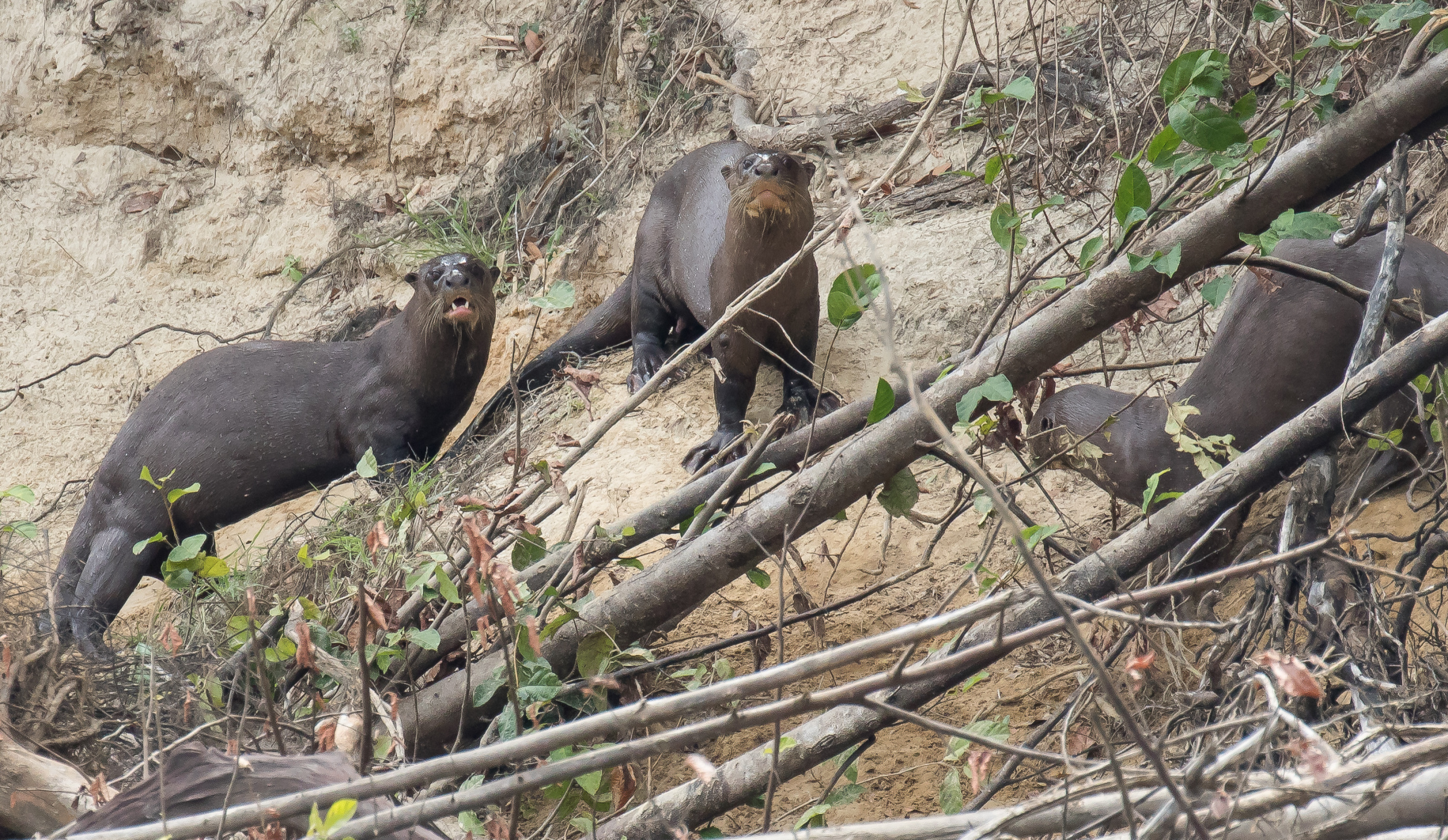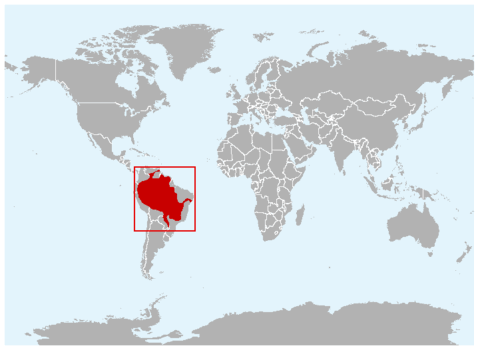Giant otters live in tight knit family groups that are dominated by a breeding pair, the rest of the group consists of their offspring up until the age of reproduction. Giant otters become mature between the ages of 3 and 5 years old. Group sizes can vary but have been recorded of up to 20 individuals in some instances. Typically group sizes are seen more along 2-10 individuals. The entire family group helps to raise the young and they all work together to find and acquire food. Because they hunt in a pack like structure some of giant otter nicknames are water dogs and river wolves.

LOBO DE RIO
GIANT OTTERS
Giant Otters are 1 of 13 different species of otters. They are the longest otter with males reaching lengths of 6ft and females growing to about 5.5ft.
Giant Otters are found in the Rainforests of South America. They are 1 of 4 species of otter on the continent of South America. You can also find the Neotropical Otter, the Southern River Otter and the Marine Otter in South America. The map above illustrates potential giant otter range. They are found along fresh water rivers, lakes and streams. However finding them can sometimes be very challenging. Giant otter populations are in decline, the population is estimated to be between 1,000-4,000 individuals left in the wild. In some of its range countries the populations are fairly stable but giant otters have gone extinct in some of their range countries. A large problem for the species is a lack of genetic flow across the population due to habitat loss and habitat fragmentation.
